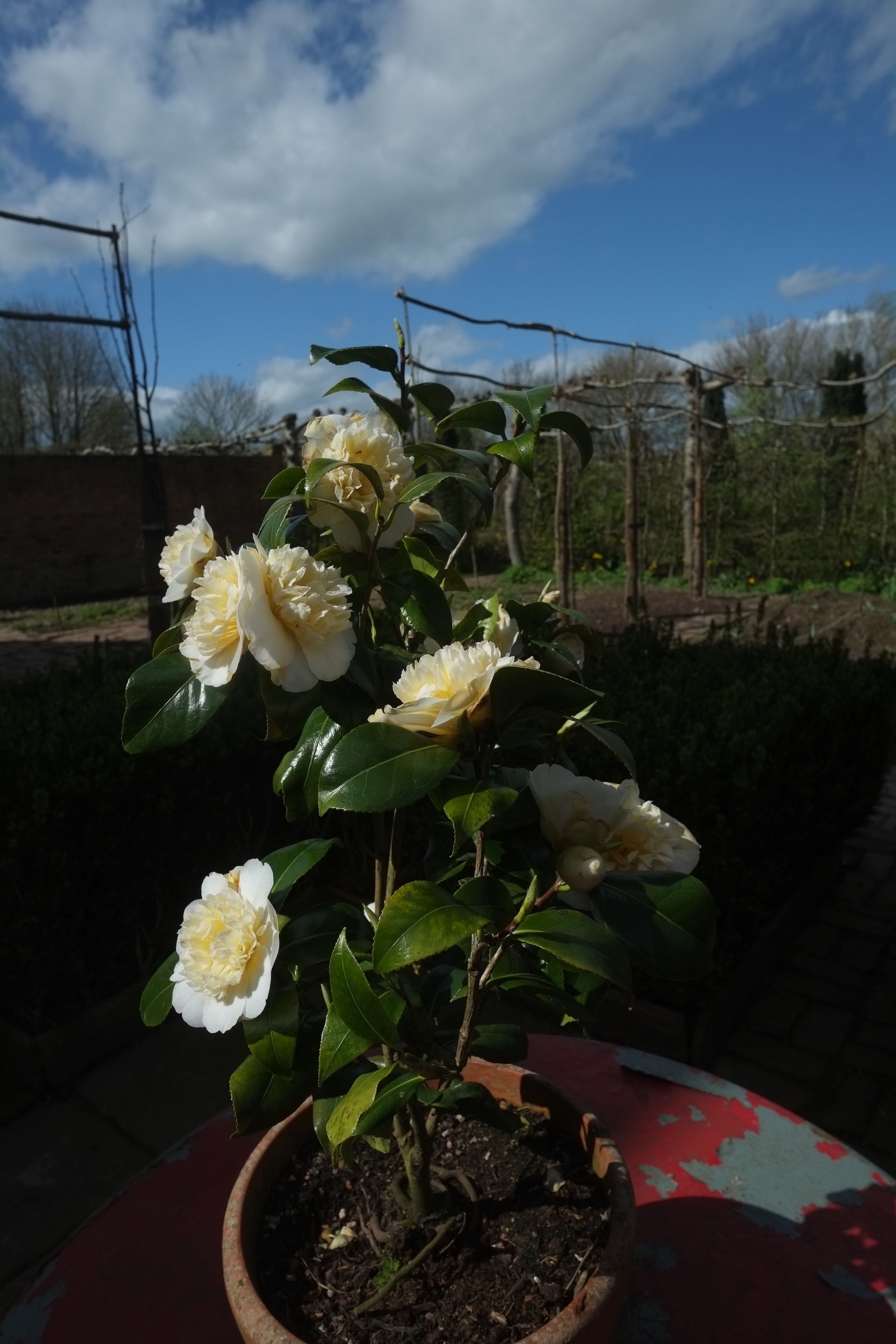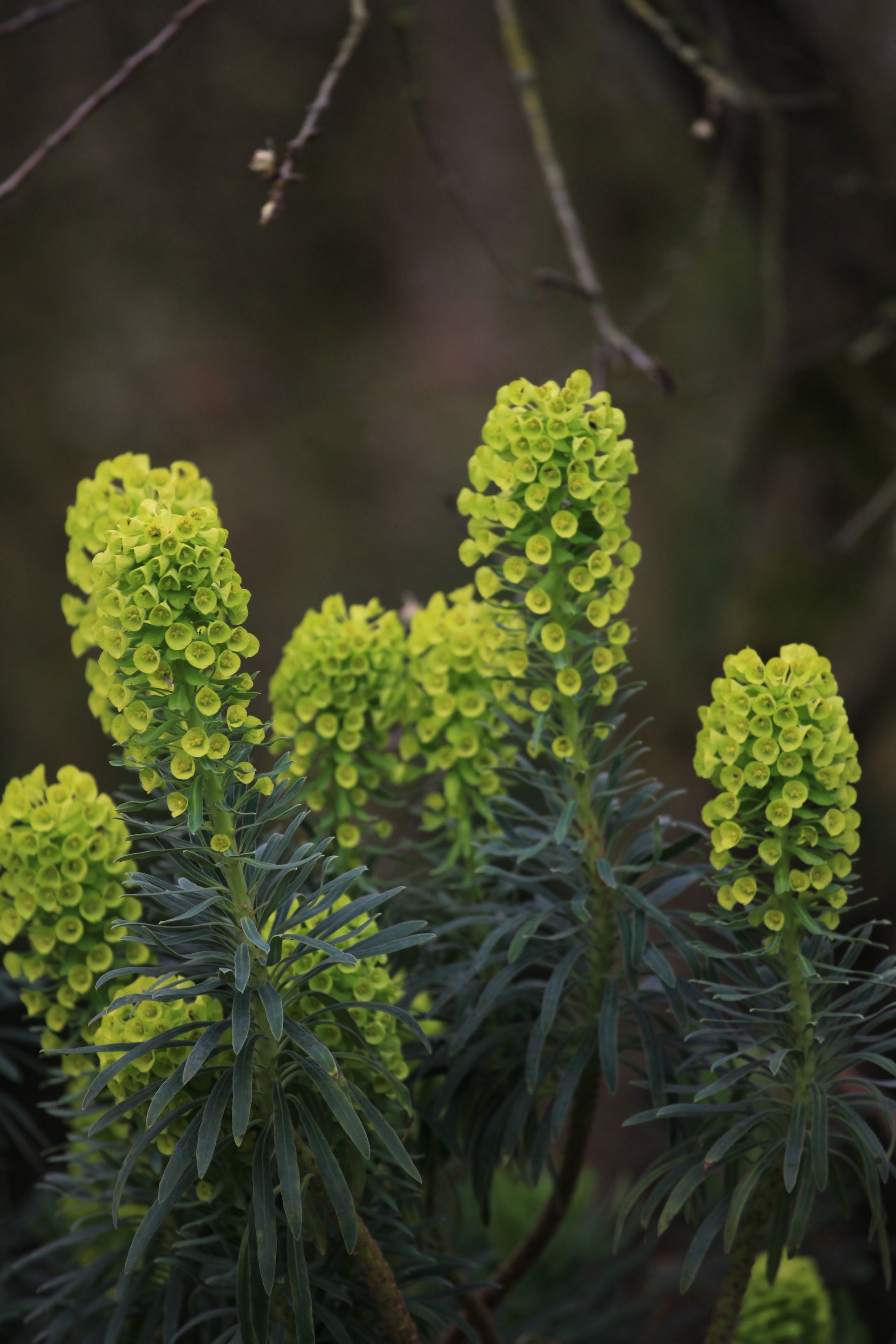March 2019
Of all the months of the year March is the most fickle. If it flatters, it does so only to deceive. If it threatens, it just as quickly cajoles. Last March, here at home we had snow, ice and a wind from the arctic that cut through every layer of clothing like a knife. The garden cowered under the onslaught for weeks. This year we go into March after the warmest February ever recorded. If nothing else, climate change is throwing all familiar patterns into the air.
But the garden adapts, resists and responds gently to the slow drift of the seasons regardless of day to day weather and the influence of the growing light is just as important as the weather. Here in the UK the clocks go forward on the 31st and we are presented with a glorious extra hour of daylight in the evenings on top of the effect of the seasonal lengthening of the days.
And whatever the weather decides to do, March is Spring. It may be a few brave bulbs peeking through the snow or a whole mass of daffodils, early blossom and even some tulips, but Spring is surely here.
March Birdsong
By mid March the sap is rising and the new surge of energy pulsing through the natural world flows in my veins too. Every day more new leaves break bud and the hedges start to glow with new green like stained glass.
The garden takes on a substance, acquires body and fills out from the bony starkness of the winter months. When the new growth appears, filling the voids, rounding the edges and gradually smudging across bare lines against the sky it always does so with a flare of surprise, a gift that arrives, for all the predictability of the calendar, unexpected.
Of course the weather can be vile. Heavy snow, ice, biting east winds are all possible and even probable but no weather in March stays long. Everything about the month is predicated on change, even from hour to hour and this trend continues as the month progresses and moves from winter into the full tide of spring.
But of all the changes the one that I love most is the dusk chorus. The Dawn chorus gets most attention – and rightly so – but it reaches its peak around the end of May. The chorus in March is much briefer, more limited and, because the light is sinking, more defiant as the garden dissolves into the dusk.
The dusk birdsong on a March evening is wistful rather than sad because in March tomorrow always holds the promise of more light, more day, more sunshine, more growth – even more birdsong.
Frogs
Ponds are an essential component of the wildlife garden and no creature enjoys or uses them more fully than the common frog, Rana temporaria. In return they will eat slugs, caterpillars, mosquitos and flies.
Frogs can be differentiated from toads by their smooth, olive coloured skin and longer back legs.
Having spent winter submerged in mud and hidden in amongst piles of wood and leaves, frogs are drawn by smell of glycolic acid that is produced by algae in ponds in order to mate. They need still fresh water so garden ponds without a fountain are ideal.
The female will lay up to three thousand eggs, usually at the shallow edge of a pond where the water will be warmer and receive more light. Each seed-sized egg is wrapped in a globule of jelly and the spawn of several frogs will join to form a gelatinous raft on the surface of the water.
About three weeks later these hatch into tadpoles which will live in the pond as they develop into young frogs over the summer. They leave the water about 12 weeks after hatching, sometime between midsummer and early autumn, and you will find that your garden is suddenly full of small froglets, seeking out cool, shady spots.
They will not return to the water until they are old enough to breed which is usually after about 2 years.
What to do in the garden this month:
If you have not done so already then now is the time to get on and mulch your borders. Mulching is very effective but very simple. All you have to do is spread a layer of organic material over any bare soil.
This will do three important jobs simultaneously. The first is to suppress any annual weeds and weaken any perennial ones. The second is to reduce evaporation and therefore keep in moisture and the third is that it will be incorporated into the soil by worms and improve the structure and nutrition.
The very best material to use is good home-made garden compost as this will be rich with the bacteria and fungi plants need to be healthy however, mushroom compost is excellent, as are bark chips or very well rotted manure.
Whatever you use it is important to spread it thick enough – no less than 2 inches deep and twice that if you have enough material. It is better to to do half the garden properly than all of it with too thin a layer of mulch.
When tidying up the borders watch out for hibernating hedgehogs who may have wrapped themselves in fallen leaves and stems and are still hibernating. These are becoming increasingly and disastrously rare in the countryside and gardens are by far the most important habitat for them in the UK.
Any herbaceous plant can be divided this month. Dig the whole plant up and discard the centre section to the compost heap, replanting the more vigorous outside parts of the plants in groups which will grow together to make one large plant. It is worth doing this to all herbaceous perennials every three to five years.
The grass will need mowing March but do not cut it too short. Just give it a light trim for the rest of this month and the grass will be a lot healthier – and better able to resist summer drought – as a result.
March is a perfectly good time to prune any shrub roses, late-flowering clematis, buddleia, elder, dogwood, rubus, willows, and deciduous ceonothus. Just remember two rules: cut hard to stimulate vigorous regrowth and always cut back to something, be it a leaf or a bud.
Deciduous grasses like miscanthus, calamagrostis and deschampsia should all be cut back hard to the ground before the new green shoots start to grow too long. Evergreen grasses like the Stipa and cortaderia families should not be cut back. However comb through each plant with a rake or your hands (I advise wearing stout gloves as grasses can be very sharp) pulling out all dead growth. The old dead growth can be shredded and composted.
When you have finished clearing and cutting back give the grasses a thick mulch with a low-fertility material – ie not garden compost or manure. I use a pine bark mulch. However, do not divide or move any grasses at this time of year. They must be growing strongly to have the best chance of surviving so wait until late May or even early June.
Allotment/veg garden
Sow seeds under cover such as cabbage, lettuce, celery, beetroot and tomatoes. Do not sow any seeds outside if the ground feels cold to touch. If warm and dry enough, sow Broad beans, beetroot, rocket, spinach, mizuna, parsnips, radish and winter lettuce.
Chit potatoes and plant out at the end of the month if the ground is dry enough.
Plant out onion and shallot sets. Cover them with fleece for the first couple of weeks to stop birds pulling them from the ground.
Dig in overwintering green manure.
Dig any unprepared ground and/or make raised beds by the end of the month.
Prune Gooseberries and red and white currants.






















